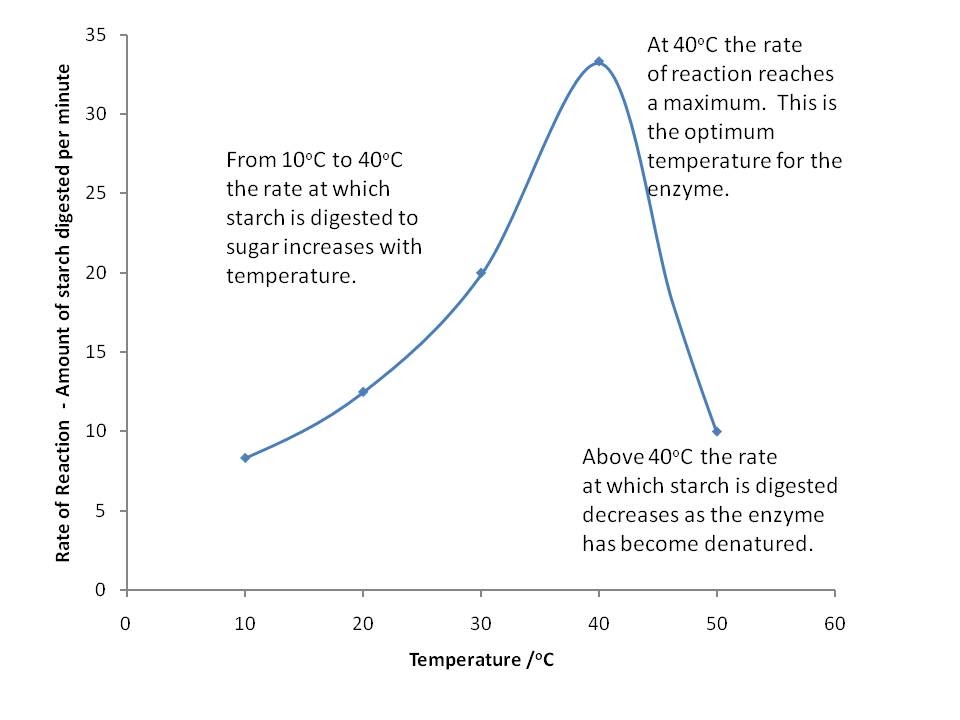Introduction
There are several properties which can alter enzyme function:
1. Temperature
2. Inhibitors (competitive and non-competitive)
3. pH
4. Substrate concentration.
Enzymes areproteins, so have a delicate tertiary structure that enables that enzyme’s adequate function. High temperature or pH would alter its tertiary structure. Inhibitors would bind to its active site, preventing substrates from doing so. This results in no enzyme-substrate complexes being formed. Let’s have a closer look at these properties individually.
Temperature
Increasing temperature results in a higher rate of activity, up to a certain point where the enzyme becomes denatured. A high temperature causes the molecule to vibrate, breaking the weak bonds that hold it together, and changing the structure of the enzyme. This process is denaturation. The point at which this happens is usually around 50 – 60 degrees Celsius.
Denatured enzymes don’t work. Look at this graph to understand the relationship between enzyme activity and temperature:

